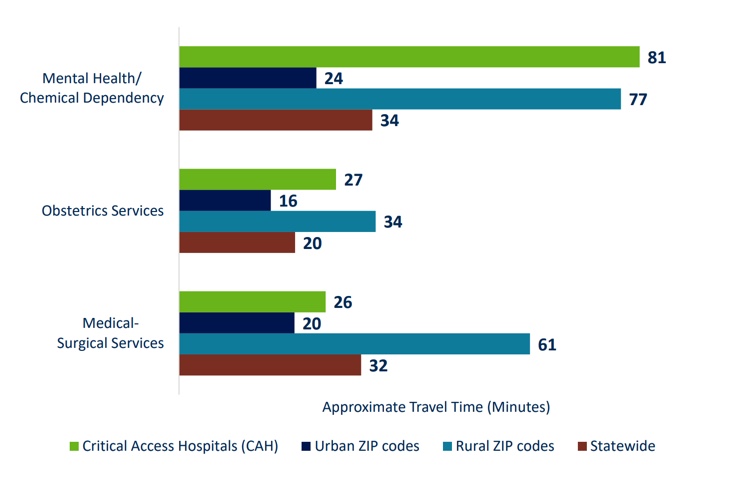Telehealth could improve healthcare access in Rural Minnesota post-COVID
Before the pandemic, health care access was tough in rural areas. And the pandemic has made that worse. Generally, in Minnesota, rural residents face worse health outcomes than urban residents. This is in part due to social and economic factors like differences in the level of income and education among rural and urban dwellers. But another big reason for discrepancies tends to be the fact that rural areas face a shortage of health care providers.
However, despite the hardship that covid-19 has brought, it has also accelerated the adoption of telehealth which is a potential solution to health care access issues in rural Minnesota.
Health care access shortage in Rural Minnesota
Healthcare providers in rural Minnesota are few and far in between. This means that the average rural resident faces a level of difficulty in getting to locations where health care facilities are located. According to the Minnesota Department of Health, Minnesotans in rural areas travel longer to access inpatient services, especially mental services. Furthermore, rural Minnesota generally faces a shortage of primary care physicians which restricts access to care for residents.

How covid has disrupted health care for Rural Residents
Generally, the coronavirus crisis has exacerbated health care access issues in rural areas for Minnesota. But this is not an issue that has been limited to Minnesota. According to a national poll conducted by NPR, Havard T.H Chan School of Public Health, and The Robert Wood Johnson Foundation, the coronavirus has ” has dramatically affected delivery, with systems facing disruptions, delays, and deferrals in care for many patients” in rural areas.
More specifically, the survey found evidence suggesting that a good proportion of rural residents were unable to access care for serious problems during the Coronavirus, and a majority of that proportion has suffered negative consequences as a result. Among other reasons, residents reported they could not get care because (1) the health location was too far or difficult to get to (2) doctors would not see them at the times that they needed, or (3) they could not afford health care.
Telehealth adoption
During the coronavirus, however, one of the most positive development has been the extensive use of remote health care access i.e. telehealth. A lot of states have made regulatory changes to enable residents to access health care remotely to make it easier for a lot of people to access care.
According to the aforementioned national poll,
Since the start of the coronavirus outbreak, more than four in ten rural households (46%) report using telehealth, where anyone in their household has received advice or treatment from a doctor or other health care professional over the phone or through asmartphone, tablet, or computer because they could not see one in person.
This development has been a necessary change due to the nature of covid-19. However, going forward to rural areas, this change presents a possible solution to the shortage of health care providers and issues with access. Telehealth is especially useful for residents that find difficulties reaching health care locations due to transport issues.
How Minnesota can facilitate the adoption of telemedicine/telehealth
For Minnesota to ensure the continuation of the adoption of telehealth, it will require first and foremost the state to ensure a more friendly regulatory environment. Currently, mental health providers have extensively adopted telehealth as a way to reach Minnesotan patients partly due to the licensing waiver that Governor Walz instituted for out of state providers. This means that after the emergency period is over, outside mental health providers will not be able to provide services to Minnesotan patients.
It is important the legislature ensures that should not happen. And that will be possible if changes made during the emergency period are made permanent. And in addition, the legislature should revise other regulations that affect remote access to healthcare, like licensing. This includes, but is not limited to, licensing rules for providers from outside of the state mental health care providers. If Minnesota can recognize health care providers licensed from out of state, that will expand the remote choice of options for rural residents.